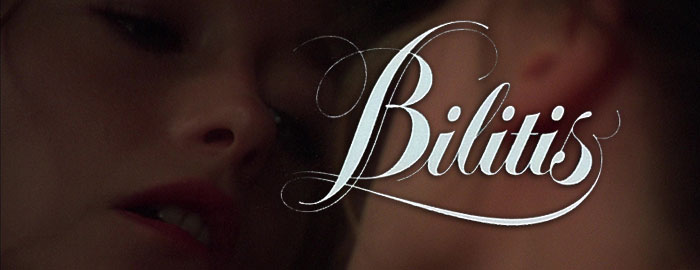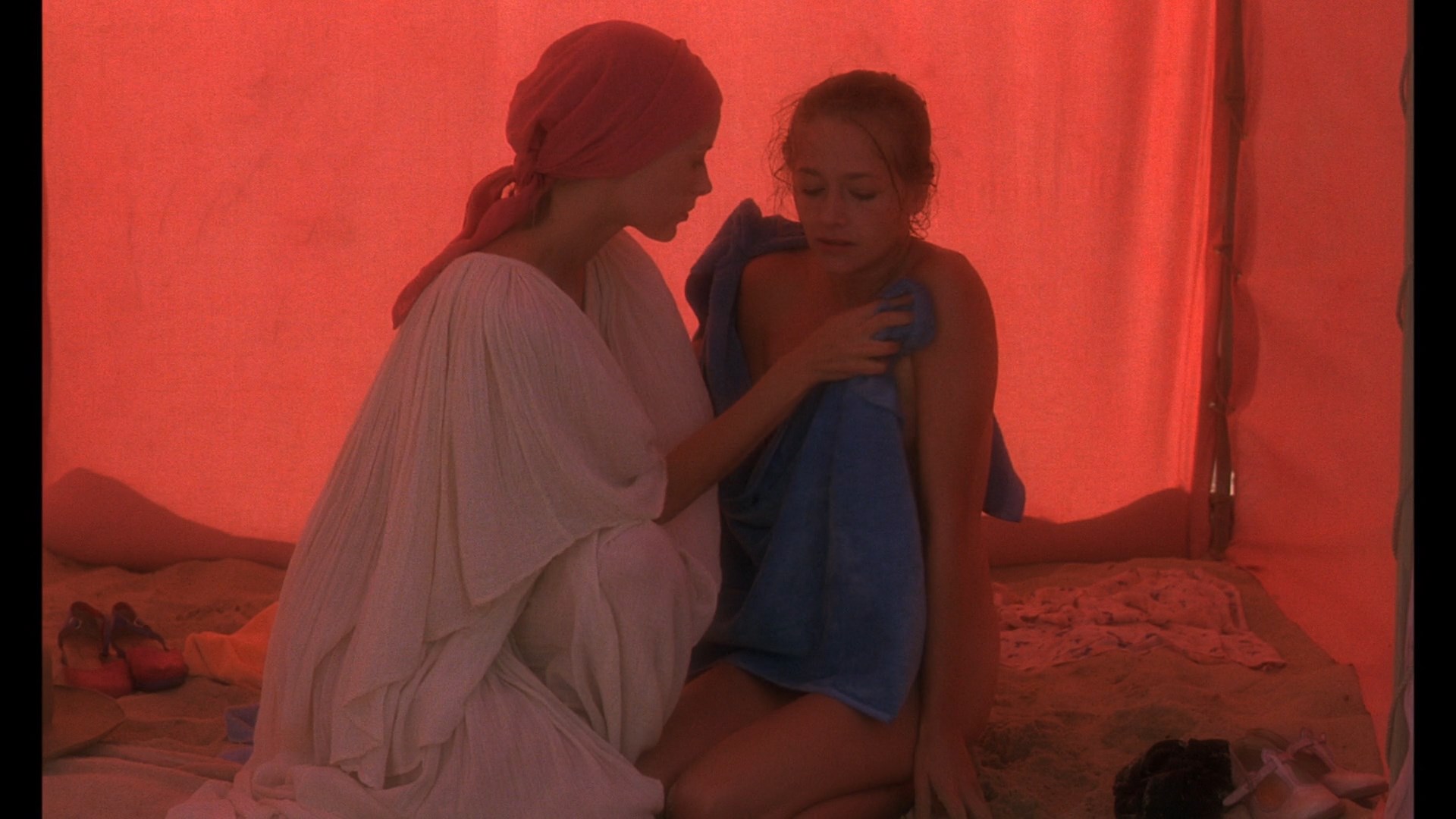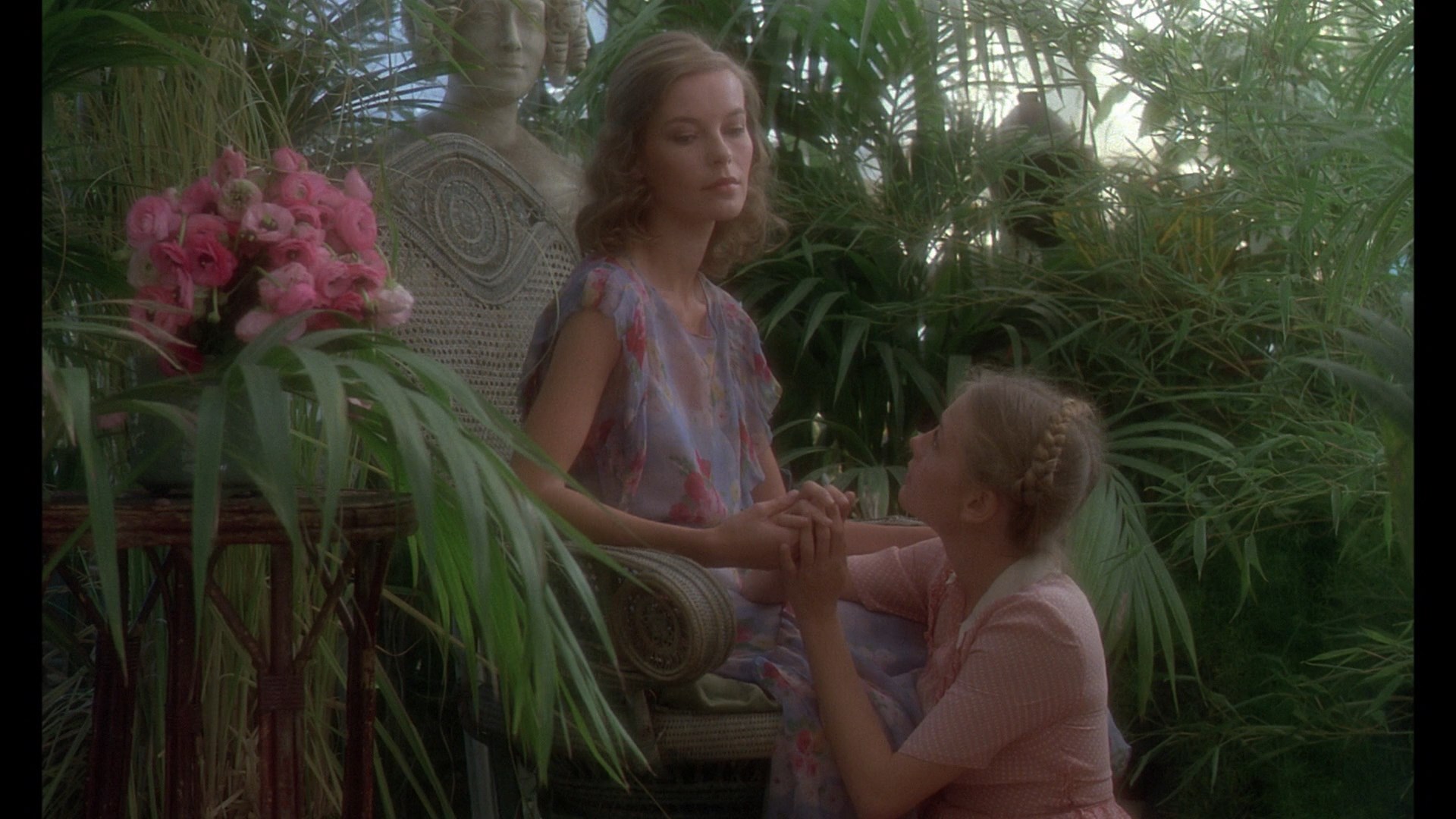



 worldwide success of Emmanuelle by
worldwide success of Emmanuelle by  French photographer turned director Just Jaeckin, European directors were scrambling to repeat its success with lots of soft focus erotic sagas about women discovering their sexuality all around the globe. The Jaeckin formula was most closely replicated by another photographer and first-time director, David Hamilton, a British fashion photographer who had successfully relocated to Paris. He came up with the savvy idea of making his first film, Bilitis, in the style of his gauzy and sometimes scandalous photographs seen various magazines and coffee table books, with a tie-in book of his photos from the production released to promote it. On top of that he brought aboard Oscar-winning composer Francis Lai (Love Story, A Man and a Woman, Emmanuelle 2), who delivered one of his most beautiful and frequently covered scores. In fact, the soundtrack was far easier to find than the actual film for many years. Hamilton repeated the film and tie-in photography book formula for his subsequent films, though he eventually stopped directing in the mid-'80s and focused exclusively on photography until his ignominious end. Seen today this film is particularly significant as the intersection of multiple significant contributors in addition to the ones
French photographer turned director Just Jaeckin, European directors were scrambling to repeat its success with lots of soft focus erotic sagas about women discovering their sexuality all around the globe. The Jaeckin formula was most closely replicated by another photographer and first-time director, David Hamilton, a British fashion photographer who had successfully relocated to Paris. He came up with the savvy idea of making his first film, Bilitis, in the style of his gauzy and sometimes scandalous photographs seen various magazines and coffee table books, with a tie-in book of his photos from the production released to promote it. On top of that he brought aboard Oscar-winning composer Francis Lai (Love Story, A Man and a Woman, Emmanuelle 2), who delivered one of his most beautiful and frequently covered scores. In fact, the soundtrack was far easier to find than the actual film for many years. Hamilton repeated the film and tie-in photography book formula for his subsequent films, though he eventually stopped directing in the mid-'80s and focused exclusively on photography until his ignominious end. Seen today this film is particularly significant as the intersection of multiple significant contributors in addition to the ones  mentioned above, most notably screenwriter
mentioned above, most notably screenwriter  and taboo-shredding director and novelist Catherine Breillat (Romance, Fat Girl) and Warhol Factory regular Patti D'Arbanville, who had just appeared in Rancho Deluxe and would go on to mainstream(ish) films like Modern Problems, Big Wednesday, and The Boys Next Door.
and taboo-shredding director and novelist Catherine Breillat (Romance, Fat Girl) and Warhol Factory regular Patti D'Arbanville, who had just appeared in Rancho Deluxe and would go on to mainstream(ish) films like Modern Problems, Big Wednesday, and The Boys Next Door. Hamilton
Hamilton  photographic memories. Despite a fair amount of intermittent female nudity, the sexual content here is far from explicit which obviously made this ideal for late night cable TV play; the film definitely tries to keep things classy with its dreamy photography, tasteful dabbling in same-sex caressing, and a late film appearance by art film mascot Mathieu Carrière, who gets to stand around gazing intensely a lot. This approach certainly wasn't exclusive to Hamilton, with other directors like Walerian Borowczyk mining similar territory (especially in Immoral Tales) to far more transgressive effect-- not surprising since they shared this film's cinematographer, Bernard Daillencourt. This approach even filtered through (literally) to Hollywood for a while as well, most notably in the films of Adrian Lyne with titles ranging from Foxes to Lolita, though now it's obviously fallen long out of vogue.
photographic memories. Despite a fair amount of intermittent female nudity, the sexual content here is far from explicit which obviously made this ideal for late night cable TV play; the film definitely tries to keep things classy with its dreamy photography, tasteful dabbling in same-sex caressing, and a late film appearance by art film mascot Mathieu Carrière, who gets to stand around gazing intensely a lot. This approach certainly wasn't exclusive to Hamilton, with other directors like Walerian Borowczyk mining similar territory (especially in Immoral Tales) to far more transgressive effect-- not surprising since they shared this film's cinematographer, Bernard Daillencourt. This approach even filtered through (literally) to Hollywood for a while as well, most notably in the films of Adrian Lyne with titles ranging from Foxes to Lolita, though now it's obviously fallen long out of vogue. albeit without any English-friendly options. (A bootleg BD-R from Spain ripped the same file and added an English track, but it's best avoided.) Scanned from a 4K restoration of the original negative, it looked great at the time and still holds up well on
albeit without any English-friendly options. (A bootleg BD-R from Spain ripped the same file and added an English track, but it's best avoided.) Scanned from a 4K restoration of the original negative, it looked great at the time and still holds up well on  the 2022 U.S. debut Blu-ray from Fun City Editions. Hamilton's style isn't exactly the friendliest to video compression, but the Blu-ray handles it well with the delicate textures coming through quite nicely throughout. Thankfully you get both the French and English audio options here with optional English subtitles; both sound good with Lai's magnificent score served well either way. As for which track is preferable, that's a bit of a toss up as it was mostly shot without live sound and the majority of the actors speaking English. (D'Arbanville visibly alternates between French and English depending on the scene.) Carrière gets to keep his own voice and natural dialogue delivery, but otherwise it's dubbed either way. Overall the French one sounds classier, while the English is technically more "authentic" even if it plays clunkier at times. Alexandra Heller-Nicholas and Josh Nelson provide a new audio commentary in which they cover the accusations against Hamilton at the end of his life, the impact of his style, Breillat's contributions, other erotic films of the era, and an argument to assign authorship of the film to D'Arbanville. Ported over from the French disc is a video interview with camera operator Noël Very (19m7s), "Le flou Hamiltonnien" (or "The Hamilton Blur"), in which he talks about getting the gig on this film thanks to his work with Borowczyk, the use of a "Harrison diffuser" to create the film's signature visual effect, and the aesthetic approach with light used to bring that photographic style to life. Also included is a booklet featuring a new essay by Samm Deighan who offers several interesting observations about the film and its numerous connections to Breillat's unsettling A Real Young Girl, which was made a year earlier but took much longer to reach the public.
the 2022 U.S. debut Blu-ray from Fun City Editions. Hamilton's style isn't exactly the friendliest to video compression, but the Blu-ray handles it well with the delicate textures coming through quite nicely throughout. Thankfully you get both the French and English audio options here with optional English subtitles; both sound good with Lai's magnificent score served well either way. As for which track is preferable, that's a bit of a toss up as it was mostly shot without live sound and the majority of the actors speaking English. (D'Arbanville visibly alternates between French and English depending on the scene.) Carrière gets to keep his own voice and natural dialogue delivery, but otherwise it's dubbed either way. Overall the French one sounds classier, while the English is technically more "authentic" even if it plays clunkier at times. Alexandra Heller-Nicholas and Josh Nelson provide a new audio commentary in which they cover the accusations against Hamilton at the end of his life, the impact of his style, Breillat's contributions, other erotic films of the era, and an argument to assign authorship of the film to D'Arbanville. Ported over from the French disc is a video interview with camera operator Noël Very (19m7s), "Le flou Hamiltonnien" (or "The Hamilton Blur"), in which he talks about getting the gig on this film thanks to his work with Borowczyk, the use of a "Harrison diffuser" to create the film's signature visual effect, and the aesthetic approach with light used to bring that photographic style to life. Also included is a booklet featuring a new essay by Samm Deighan who offers several interesting observations about the film and its numerous connections to Breillat's unsettling A Real Young Girl, which was made a year earlier but took much longer to reach the public. Fun City Editions (U.S. Blu-ray)
LDJ (French Blu-ray)
![]()